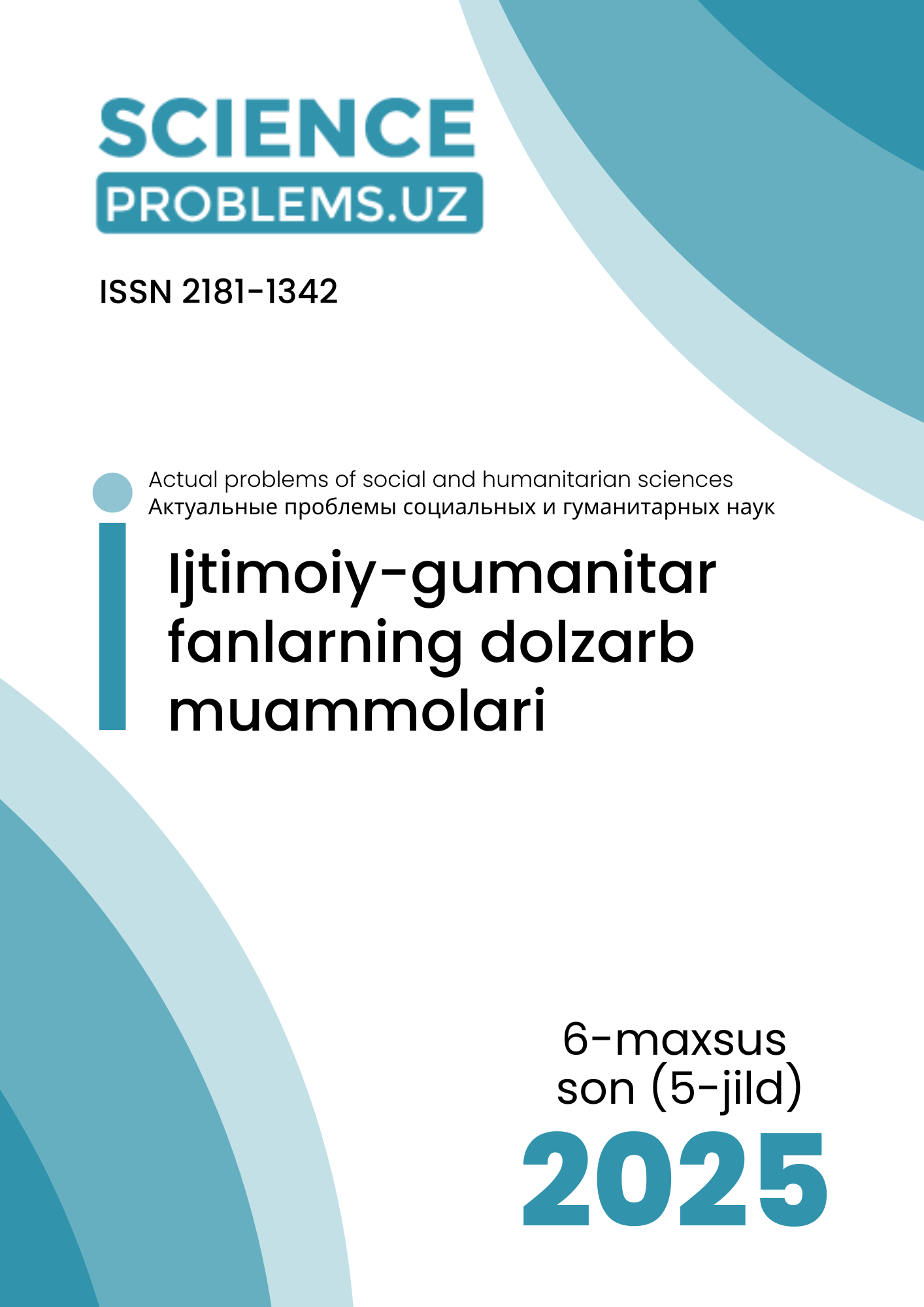LINGUOCULTURAL FEATURES OF PHRASEOLOGICAL UNITS IN THE UZBEK AND SPANISH LANGUAGES
DOI:
https://doi.org/10.47390/SPR1342V5SI6Y2025N15Keywords:
phraseologism, linguoculture, national mentality, Uzbek language, Spanish languageAbstract
The article explores the linguocultural features of phraseological units in the Uzbek and Spanish languages. The author highlights the role of phraseologisms as elements expressing national mentality and language-specific characteristics. Through comparative analysis, the study reveals the symbolic, figurative, and cultural components encoded in phraseological expressions. The findings demonstrate that idioms reflect both universal and culturally specific values of their respective speech communities.
References
1. Шамахмудова А.Ф. Миллий ифодаларнинг лингвомаданий хусусиятлари. – Т.: Фан, 2019.
2. Хожиматов Б.Ф. Ўзбек тили фразеологизми ва маданият. – Тошкент: Ўқитувчи, 2015.
3. Назаров М.Л. Тил ва маданият: интерфаол боғлиқлик масалалари. – Т.: Муҳаммад ал-Хоразмий нашриёти, 2021.
4. Casares J. Introducción a la lexicografía moderna. – Madrid: Gredos, 2001.
5. Axmedova N. Frazeologik birliklarning semantik-struktur xususiyatlari. – Тошкент: Tafakkur, 2018.
6. Gómez Torrego L. Semántica y fraseología del español actual. – Madrid: Arco Libros, 2010.
7. Kunina N.M. Kurs frazeologii sovremennogo russkogo yazyka. – Moskva: Vysshaya shkola, 2004.
8. Dobrovol'skij D.O., Piirainen E. Figurative Language: Cross-Cultural and Cross-Linguistic Perspectives. – Amsterdam: Elsevier, 2006.
9. Makkay I. Introduction to Phraseology. – London: Routledge, 1997.
10. Teliya V.N. Frazeologiya kak obshchelingvisticheskaya disciplina. – Moskva: Nauka, 1996.








